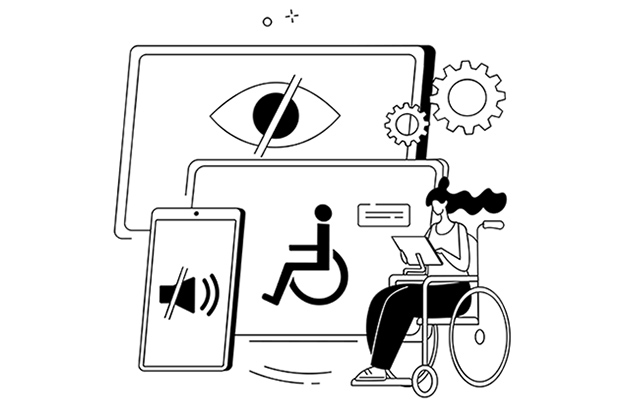Why a Web Accessibility Checker is Crucial for Your Company
Did you know that providing web accessibility to people with disabilities is the law, according to the WCAG? What’s more, federal courts increasingly pursue legal action against non-compliant companies. In fact, 2020 saw 3,500 such lawsuits filed, and 74% were against companies with E-commerce storefronts.1 It’s also important to note that all-sized businesses are legally vulnerable, and smaller companies with limited resources get hit the hardest.

But let’s not forget the human element of this story. People with disabilities—over 1 billion globally and 53 million in the U.S. alone—comprise the most significant worldwide minority.2 So, it’s incumbent upon all companies to be good corporate citizens and accommodate this demographic with digital accessibility.
Turn to Assistive Technology for Help
Implementing assistive technology tools on your website may seem financially intimidating at first glance. Nevertheless, numerous tools are available to help your site be more accessible and compliant within your budget. By contrast, trying to achieve these goals with your in-house team is cost and time-prohibitive. That said, the manual approach alone can’t provide the accuracy and thoroughness of an automated technology tool.
One way companies increasingly achieve better compliance and accessibility is by partnering with a third-party vendor. As such, it’s best to use a provider with an automated accessibility checker that scans your site for WCAG compliance. Ideally, you want an accessibility scanner that checks all desktop and mobile elements to ensure a consistent user experience. You also want a tool that red flags violations that need fixing and provides explicit instructions for your dev team on required code modifications.
Periodic Scans Are The Best Approach
Almost all websites, particularly those with E-commerce storefronts, require regular content changes. That said, periodic accessibility testing is the best way to keep that content more compliant and accessible. This approach will also help safeguard you legally, enhance your image ethically, and maximize your online sales potential. After all, why wouldn’t you want to serve the largest minority group in the world?
An Accessibility Checker is Good For Business
Beyond the legal and ethical implications, using a third-party accessibility checker is simply a wise business strategy. E-commerce sales continue to skyrocket, and companies on board with accessibility will get the most out of related consumer trends. The stats below tell a compelling story:
- U.S. E-commerce sales in 2018: roughly $5.2 trillion3
- 2026 projections: $8.1 trillion3
- 93% of consumers want better E-commerce sites than physical stores4
- 52% will pay more if they can find products faster4
Digital Accessibility is Here to Stay
There’s one thing you can be sure of concerning digital accessibility. It’s not a fad or an excellent add-on marketing asset. On the contrary, people with disabilities represent a massive swath of the population and come from vastly different backgrounds. So why would any business with an eye on its bottom line ignore this critical audience?
In addition, legal action for non-compliance will only continue to rise, and companies that act now can get ahead of the curve. Above all else, providing an equitable website for all users is better for the whole population. To that end, integrating an effective web accessibility checker is undoubtedly a step in the right direction.
Copyright © . All Rights Reserved